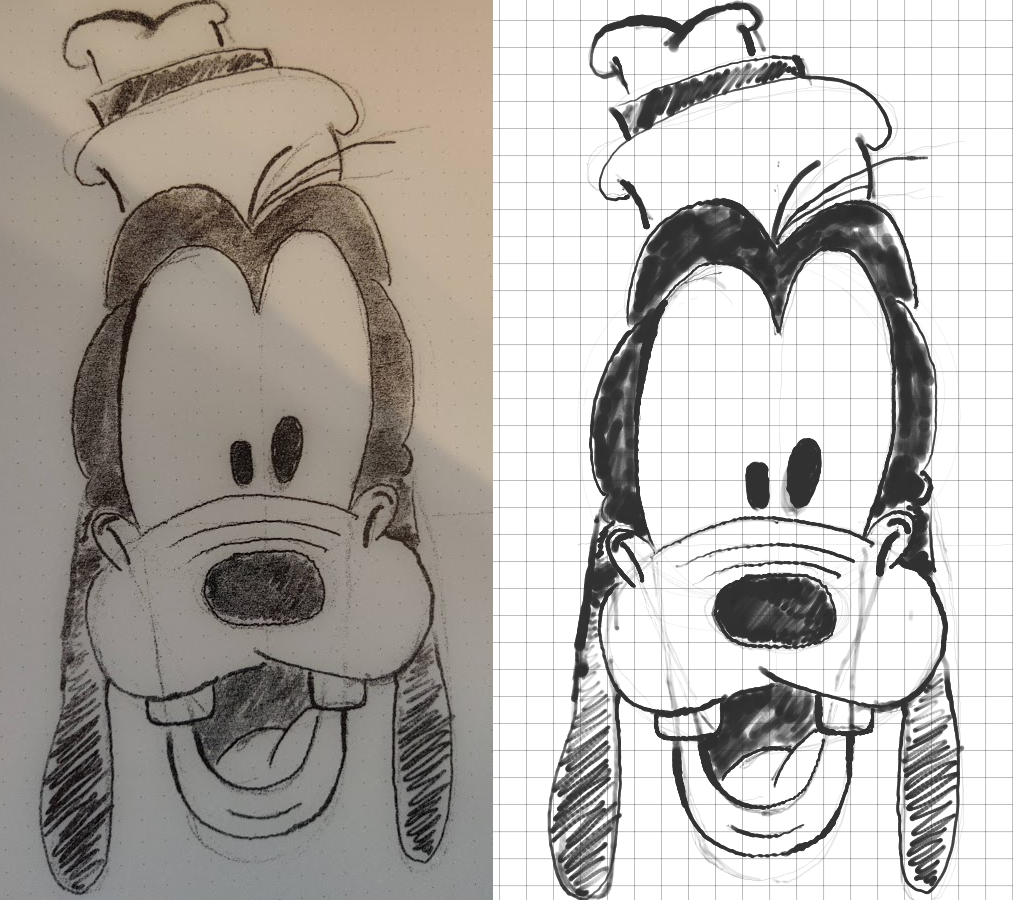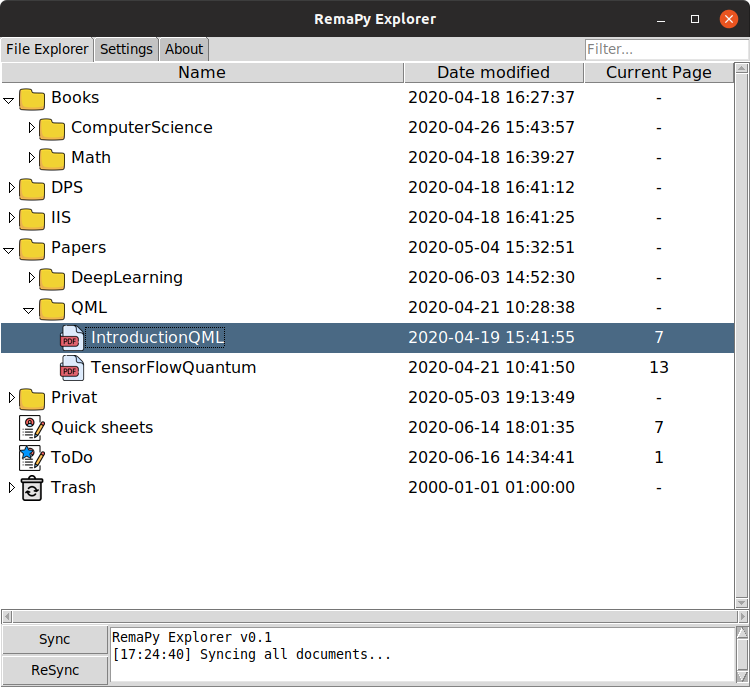IMPORTANT: ON SOME DEVICES, REMAPY NO MORE SYNCS CORRECTLY AND I CAN CURRENTLY NOT REPRODUCE THIS PROBELM OR GUARANTEE THAT FILES ARE NOT CORRUPTED AFTERWARDS. NEVERTHELESS, I HOPE WE CAN FIX THIS ISSUE SOON. SEE ALSO peerdavid#47
RemaPy is an open-source file explorer for your reMarkable tablet that uses the reMarkable cloud. You can upload documents (via copy and paste), open notebooks and annotated pdfs and delete documents or collections. RemaPy is written in Python and only tested on Linux. Thanks to the community for adding scripts and code to make RemaPy also executable on Windows! Note that for OSX we have currently some problems with RemaPy. See also Issue 10. A "how to install", the software architecture and FAQ's can be found in the wiki.
Checkout also my reMarkable Uploader App on the Google Play Store.
Snapped highlights of rM v2.7 are now supported!
WARNING: This project is not affiliated to, nor endorsed by, reMarkable AS. I am not responsible for any damage done to your device or your data due to the use of this software.
Snapped highlights of v2.7 are fully supported:

With RemaPy you can open the annotated pdf file (double click). You can also open the original file without annotations or you can open the file containing only the pages that are annotated (right-click). If evince is installed on your system, RemaPy opens the same page as on your tablet. Note that if you open a collection, all child items are opened recursively.
If you copy and paste a file from your file explorer into RemaPy, it is uploaded if the file ends with .pdf or .epub. Select the base folder (or any item in this folder) where the file should be located after the upload. If you copy and paste a URL, the given website is automatically converted into a pdf and uploaded to your reMarkable. Note that some heuristics are implemented to accepts the "terms of usage" of pages automatically, but this will not work in every case (see also FAQ). Please also note that some additional packages must be installed to use this feature (pdfkit and wkhtmltopdf).
The rendering is implemented accordingly to [4]:

Custom colors for individual layers are used by RemaPy for rendering
if the layer name contains a '#' followed by a valid color name or
hex code.
For example "Layer1 #ffee11" is rendered with hex color #ffee11 or "Layer 2 #red"
is rendered in red. The hex code also supports alpha values (e.g. #ffee11dd).
Therefore you can easily hide layers in the rendering process by setting the last
two values of the hex code to zero: #xxxxxx00.

You can use the filter (upper right) to display only a subset of documents and collections (not case sensitive). To search only for bookmarked items, start your search string with "!b". For example to search for all bookmarked items that contain "RemaPy", enter "!b RemaPy". To search all items that contain "RemaPy" enter only "RemaPy".
In the settings tab you can find an option "Backup". This creates a backup of all your annotated pdf files into the given folder. Note that it it is not possible to backup or restore the raw items.
RemaPy uses the same delete logic than the ReMarkable V2.2. Therefore if you delete a collection or a document, it is moved into the trash. You can delete the item completely from the tablet if you delete it inside the trash. You can also restore files that are deleted from the trash. NOTE: If you create a backup, the trash is also included.
- Rename or delete items
- Toggle bookmark
- Offline mode
[1] Python reMarkable api, https://github.com/subutux/rmapy
[2] Golang reMarkable tool, https://github.com/juruen/rmapi/
[3] Icons made by Freepik, Smashicons, Pixel Perfect, iconixar srip,
Good ware, prettycons, Payungkead, bqlqn from www.flaticon.com
[4] Improved our rendering a lot, https://github.com/lschwetlick/maxio

